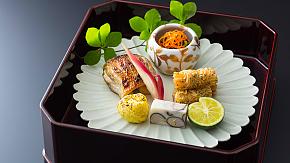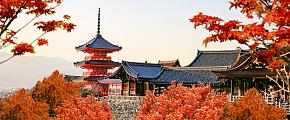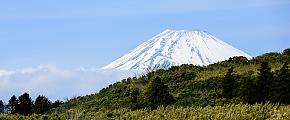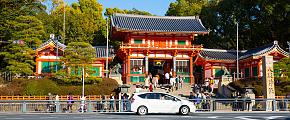Must-Try Dishes & Food When Traveling in Japan
A tour of Japan is not complete without a taste of its amazing cuisine. Crispy fried tempura with a strong healing power, makes you get rid of anxiety and stress in life, and delicate wagashi sweets give you a fresh feeling of the season. With the following Japan's must-try dishes, fill your stomach happy and enjoy the ultimate pleasure of delicacy.
Sushi - Prepared Vinegared Rice
Sushi is a must-try dish in Japan, embodying the essence of Japanese cuisine with minimal processing to highlight the freshness of each ingredient. Each bite combines the delicate flavors of fish and rice, simple yet layered, creating a truly memorable experience.
Sushi restaurants line the streets of Japan. Enjoying sushi is not only a culinary journey but also a cultural dialogue with chefs who are masters of their craft. In many renowned sushi spots, guests can observe chefs working skillfully at the counter, an unspoken and beautiful exchange between chef and diner.
When savoring sushi, don't miss maguro, the prized tuna, which can be divided into three different cuts, each offering a distinct flavor profile. Akagai, another standout, is bright in color, unique in shape, and delicious, often considered one of the most visually striking types of sushi. For a touch of sweetness, try anago, or sea eel, which has a rich, melt-in-your-mouth texture and a sweet aftertaste.
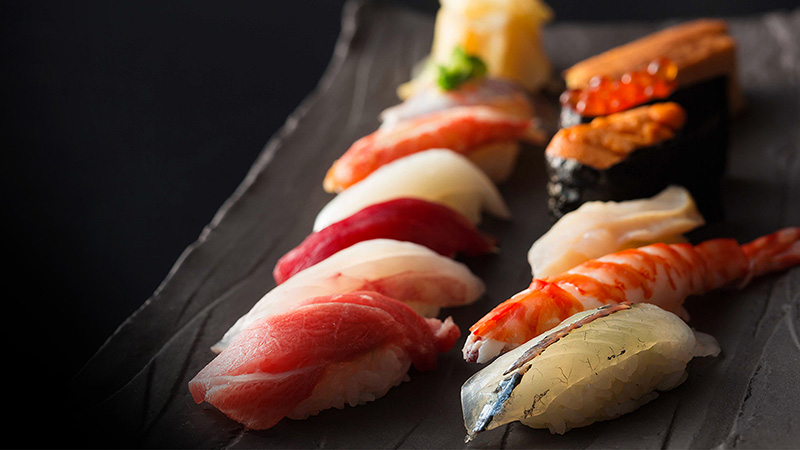 Sushi
Sushi
Sashimi - Sliced Raw Fish or Meat
Sashimi, a traditional Japanese dish, involves thinly slicing fresh fish and serving it with a dipping sauce and a touch of wasabi. As an island nation with a vast array of seafood, Japan's sashimi offerings cater to every taste, whether you enjoy shrimp, crab, and shellfish, or prefer salmon, tuna, cuttlefish, and octopus.
Following Japanese custom, it's best to start sashimi with lighter selections, like crab and shrimp, before moving to richer options like shellfish. This gradual approach awakens your taste buds, letting you fully savor each type's unique qualities. Salmon is a popular choice, prized for its buttery, rich taste and smooth texture, which melts in your mouth with just a few chews. Tuna, known as the 'king of sashimi,' has a tender, flavorful meat, high in fat, making it one of the finest sashimi choices.
If you're unsure where to start, try an Omakase experience, a menu-less option where the chef curates your meal based on the season's freshest ingredients. It's an ideal way to enjoy a variety of expertly selected sashimi.
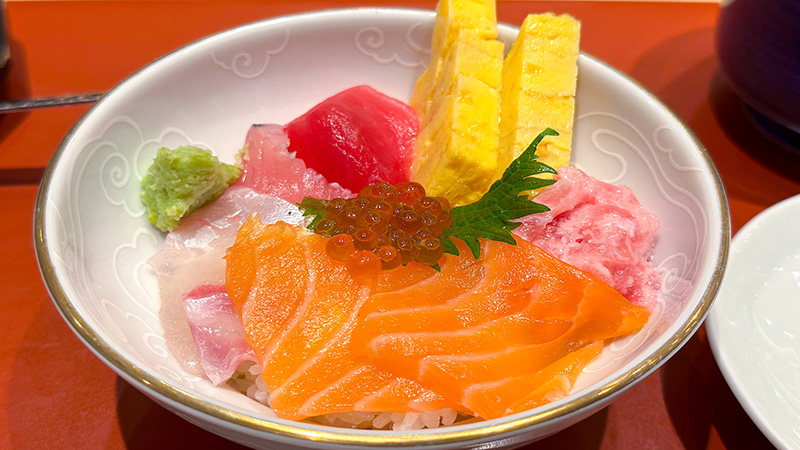 Sashimi
Sashimi
Kobe Beef - the World's Best Beef
Kobe beef is renowned for its exceptional quality and unique flavor. Carefully selected from the finest cuts of Kobe cattle, only a small portion meets the stringent standards required for true Kobe beef. Known for its delicate texture and sweet, marbled richness, the fat in Kobe beef blends seamlessly with its flavor, creating a taste experience that truly dances on the palate.
In Japan, each restaurant has its own approach to preparing Kobe beef, adding unique touches to this must-try dish. To experience its purest taste, try iced beef sashimi - small slices of raw beef lightly dipped in soy sauce or sprinkled with salt, which intensifies its natural flavors.
For a more robust experience, Kobe beef prepared on a charcoal grill or teppanyaki is also highly recommended. Charcoal grilling brings out a tender, rich flavor, allowing the beef to melt in your mouth. Teppanyaki, meanwhile, is a feast for both the eyes and the palate, with expert chefs cooking the finest cuts right in front of you. The aromas, flavors, and visual presentation make it a truly immersive experience.
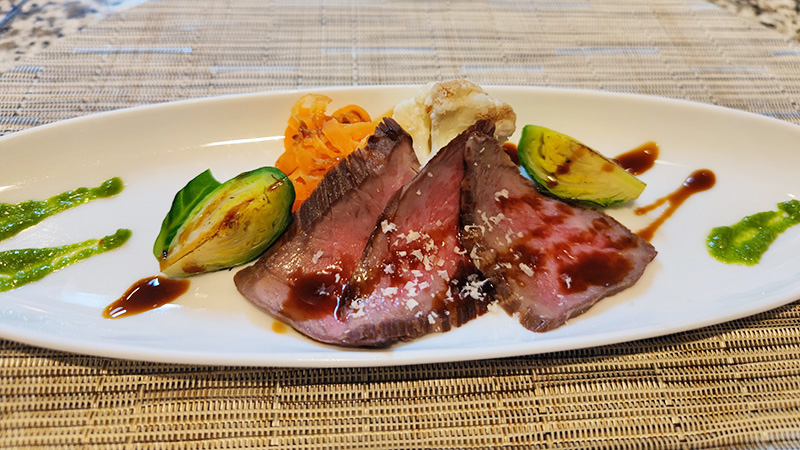 Kobe Beef
Kobe Beef
Sukiyaki - Japanese Beef Hot Pot
Sukiyaki, a Japanese beef hot pot, is a must-try dish that embodies the elegance of simplicity. Traditionally made with beef, green onions, vegetables, konjac, tofu, and other optional additional ingredients, the chef prepares the dish in an iron pot, seasoning it with a mixture of soy sauce and sugar. The preparation methods and sauces vary by region, but one essential tradition is dipping each bite in raw egg before eating.
This technique may seem surprising at first, but once you try it, you'll understand why it's so beloved. The raw egg cools the food slightly while forming a light, velvety coating that enhances the dish's smoothness. The tender beef, fresh vegetables, and fragrant broth harmonize in each bite, creating a rich, balanced flavor experience.
Picture enjoying sukiyaki with close friends, seated around the steaming pot, accompanied by a few bottles of sake. Savor freshly cooked beef slices dipped in egg and served with a bowl of hot rice. This hearty combination satisfies cravings for savory richness and cozy, comforting flavors.
Ramen - Japanese Noodle
Ramen is beloved across Japan, with each restaurant offering its own secret recipe for the broth. The rich, savory soup and perfectly cooked noodles topped with soft-boiled eggs, crispy nori, and narutomaki, not only invite you to finish the entire bowl but make you want to savor every last drop.
- Soy sauce ramen is among the most popular types, with its deep brown broth and layered flavors. The broth, based on seafood and sweet soy sauce, pairs beautifully with soft, chewy noodles for a rich and satisfying taste.
- Salt-flavored ramen, originating in Hakodate, Hokkaido, has a light, clean flavor that reflects the colors of its ingredients, which are fresh and slightly sweet. Served with thin noodles, toppings like tender pork, dried bamboo shoots, and corn enhance its unique taste.
- Miso ramen hails from Sapporo, Hokkaido, with its thick, bold flavor. The broth blends various miso pastes with ingredients like chicken and pork bones, creating a rich, oily consistency that pairs with wavy, medium-thick noodles for a hearty experience.
- Tonkotsu ramen, popular in Kyushu, features a creamy white broth made by simmering pork bones for over 15 hours. This collagen-rich soup has a light, creamy texture and is served with thin noodles and toppings like barbecued pork. Its delicious, complex flavor is a favorite among locals.
Ramen is truly a must-try dish in Japan. Whether you prefer pork bone, salt, soy sauce, or miso, Japan has a ramen shop to satisfy every craving. Before diving into the noodles, be sure to sip a spoonful of the broth for the full experience.
 Ramen
Ramen
Tempura - Japanese Thin Batter With Deep Fried
While you might expect fried food to be greasy, tempura is quite the opposite. This popular Japanese dish is known for its unique cooking method that combines steaming and frying simultaneously. Fresh ingredients are dipped in egg, lightly coated in flour, and then fried in oil, creating a light, crispy crust that locks in the natural flavors of the food.
Seafood is a staple in tempura, with dishes like spotted shrimp typically served first. Star eel is another signature item in many tempura restaurants; when the chef slices open the freshly fried eel with iron chopsticks, an irresistible aroma is released. Beneath the crispy exterior, the eel is tender, rich, and flavorful.
Tempura is best enjoyed with a dipping sauce tailored to each ingredient. For example, spot prawns are often paired with a touch of salt to enhance their natural sweetness, while star eel is served with a refreshing radish puree to balance its rich oils. Japan is home to many century-old tempura restaurants where an advance reservation will give you a memorable experience.
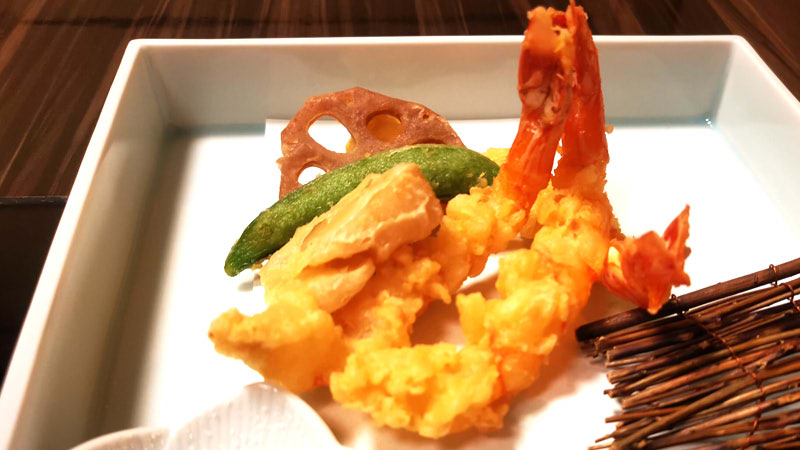 Tempura
Tempura
Wagashi - Japanese Traditional Sweet
Wagashi, traditional Japanese confections, are made mainly from sugar, glutinous rice, and red beans. There are two main types of wagashi based on water content. Namagashi, with a higher water content, includes treats like Daifuku, which pairs well with matcha tea. Higashi, the drier variety, such as senbei, is often found on traditional Japanese tables.
Wagashi varies with the seasons and is handmade with fresh, seasonal ingredients. Taiyaki, for instance, is a fish-shaped pastry filled with sweet red bean paste, best enjoyed hot, with a crispy shell that provides warmth on cold days. In summer, lighter wagashi like strawberry Daifuku and other refreshing, translucent varieties offer a cool treat. Flavors can include ice cream, cheese, and fruit fillings, perfect for a hot day.
Every piece of wagashi embodies the spirit of Japanese craftsmanship. If you're looking to experience Japanese culinary artistry, wagashi is a must-try, each piece capturing fleeting moments of beauty in its simplicity. For a meaningful souvenir with a distinct Japanese touch, wagashi makes an excellent gift for friends, encapsulating beauty and tradition in every bite.
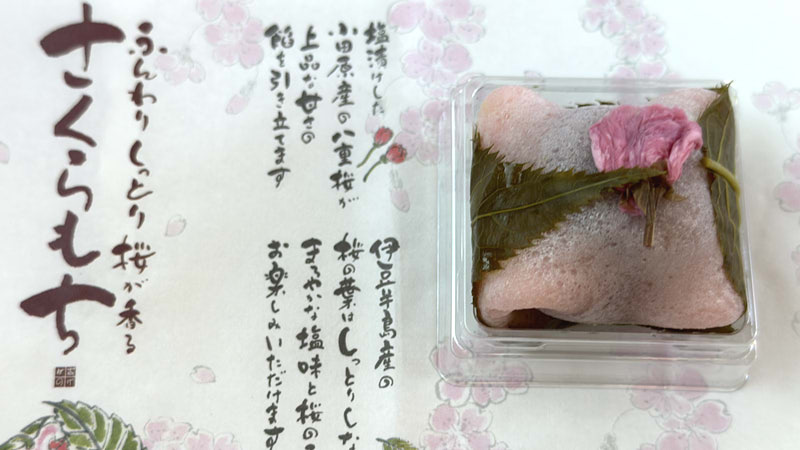 Wagashi
Wagashi
Enjoy the Best Bite of Japanese Dishes
Feel the delicacy of the top ingredients, sample fresh seafood as well as the tender and juicy taste of the ingredients themselves. Japanese cuisine will bring you a feast of sight and taste. Travel with Odynovo and enjoy the unique charm of Japanese dishes and street food.
Quick Question
What Our Clients Say
Explore the latest verified reviews of Odynovo's travel services on Tripadvisor, Google, Trustpilot, Product Review and more trusted platforms.
SUBSCRIBE TO WIN A FREE TOUR
Subscribe to our newsletter for a chance to win a free 7-day tour to India! And more insider travel news, exclusive offers, and inspiration will be sent straight to your inbox. Check our previous newsletters and get some sparks.

